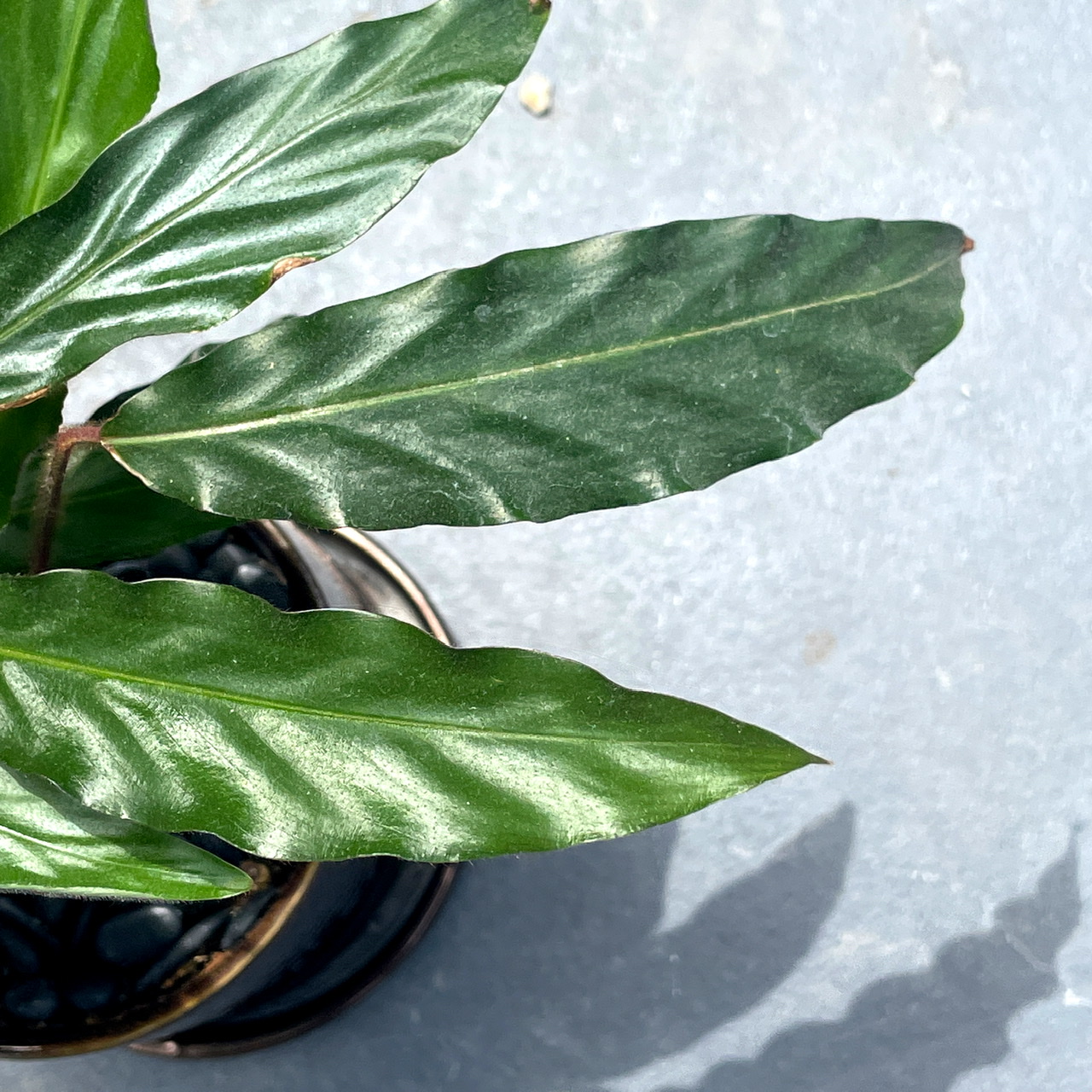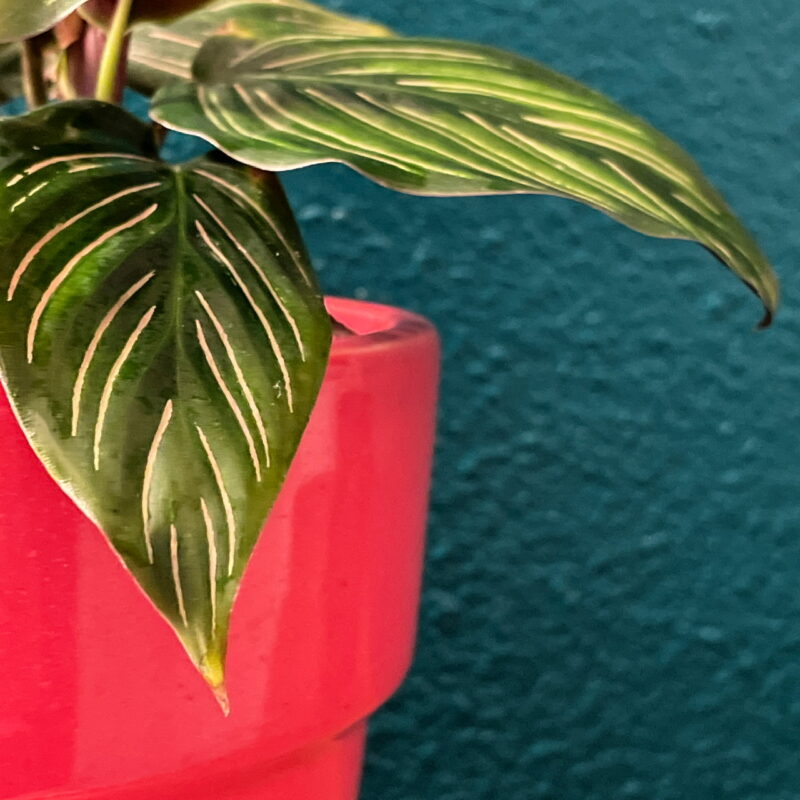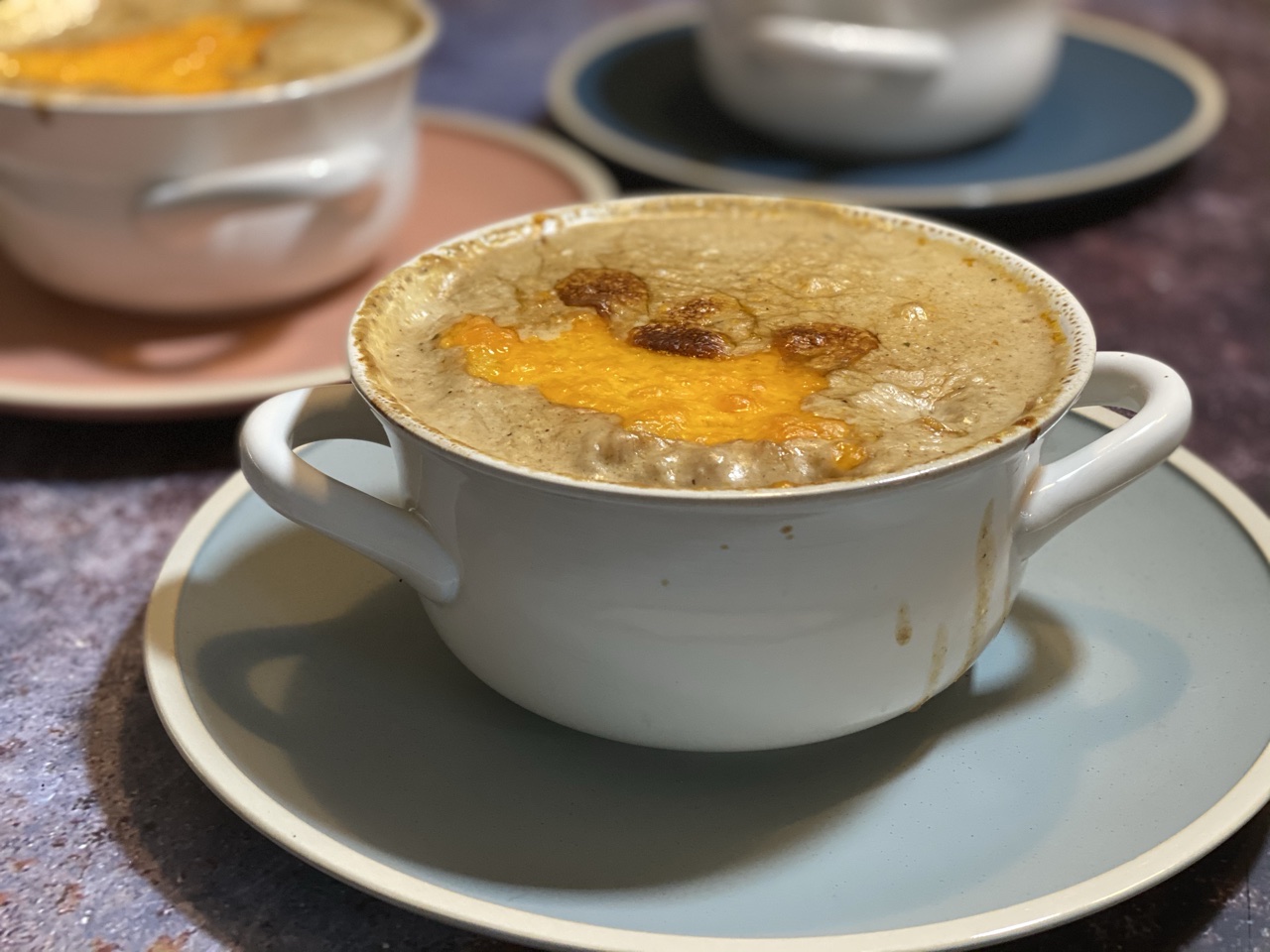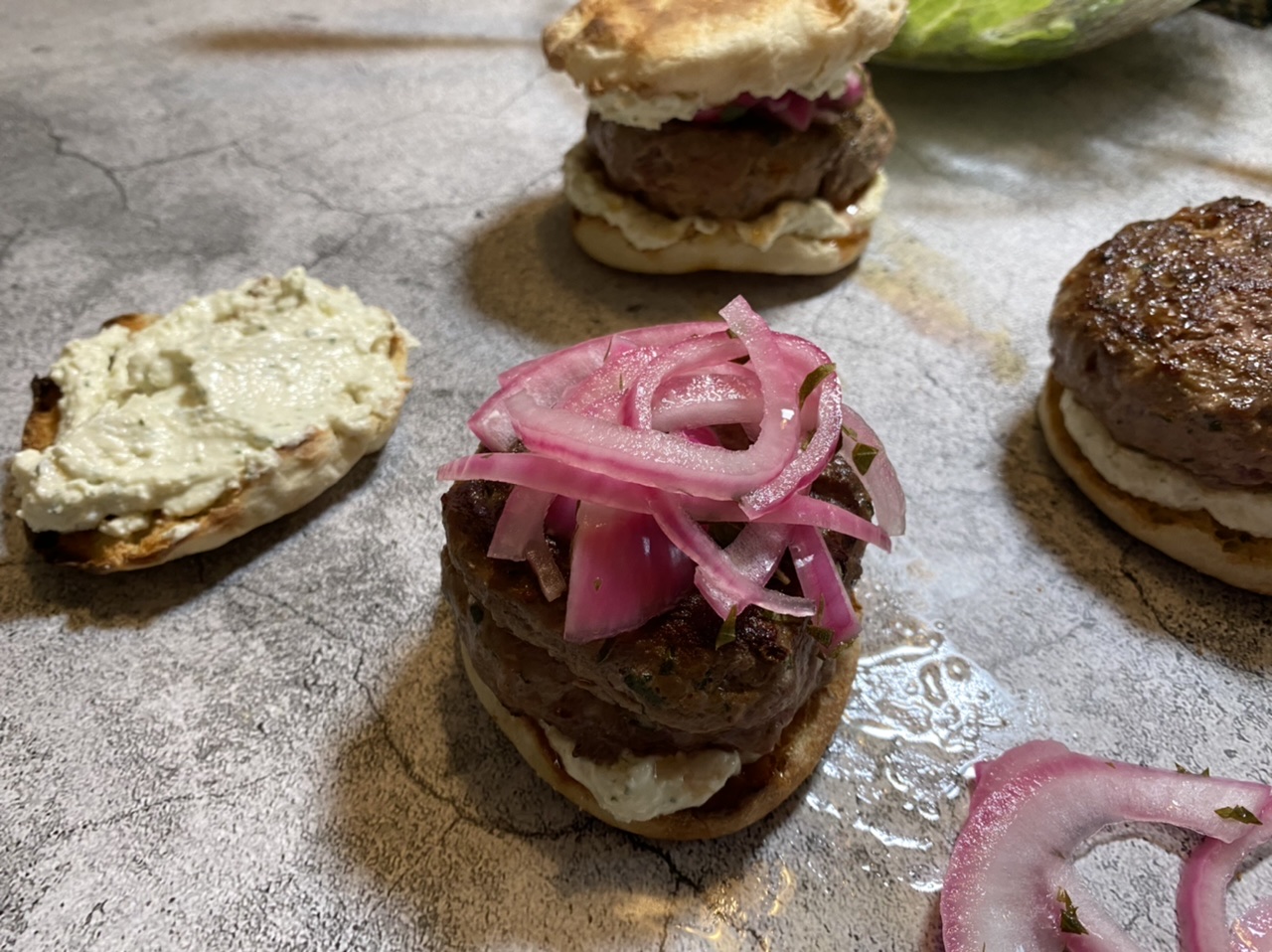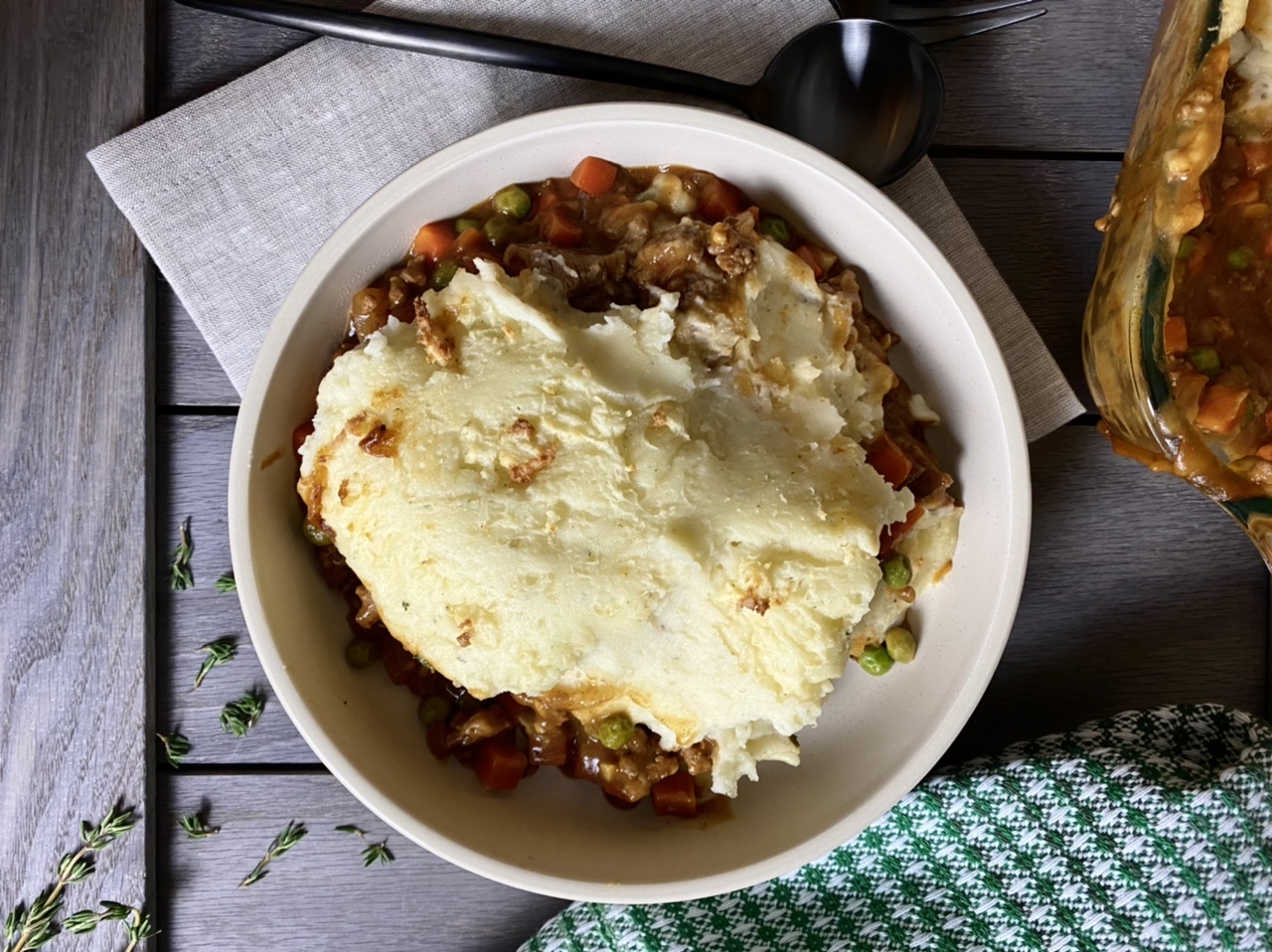Lately I’ve noticed so many plant varieties that used to be hard-to-find and only available at boutique shops are now popping up everywhere. Big box stores that used to have sad little plant sections filled with droopy peace lilies and philodendrons have now upped their game and offer many more interesting options. Even my local Target has live houseplants in-store now! I will always, always advocate buying houseplants from local shops over purchasing online or from big retailers, but I do really enjoy seeing way more plant varieties on a regular basis. More and more people seem to be stepping out of their comfort zone too and trying their luck with plants that are a little more difficult to care for than some of the mainstay species.
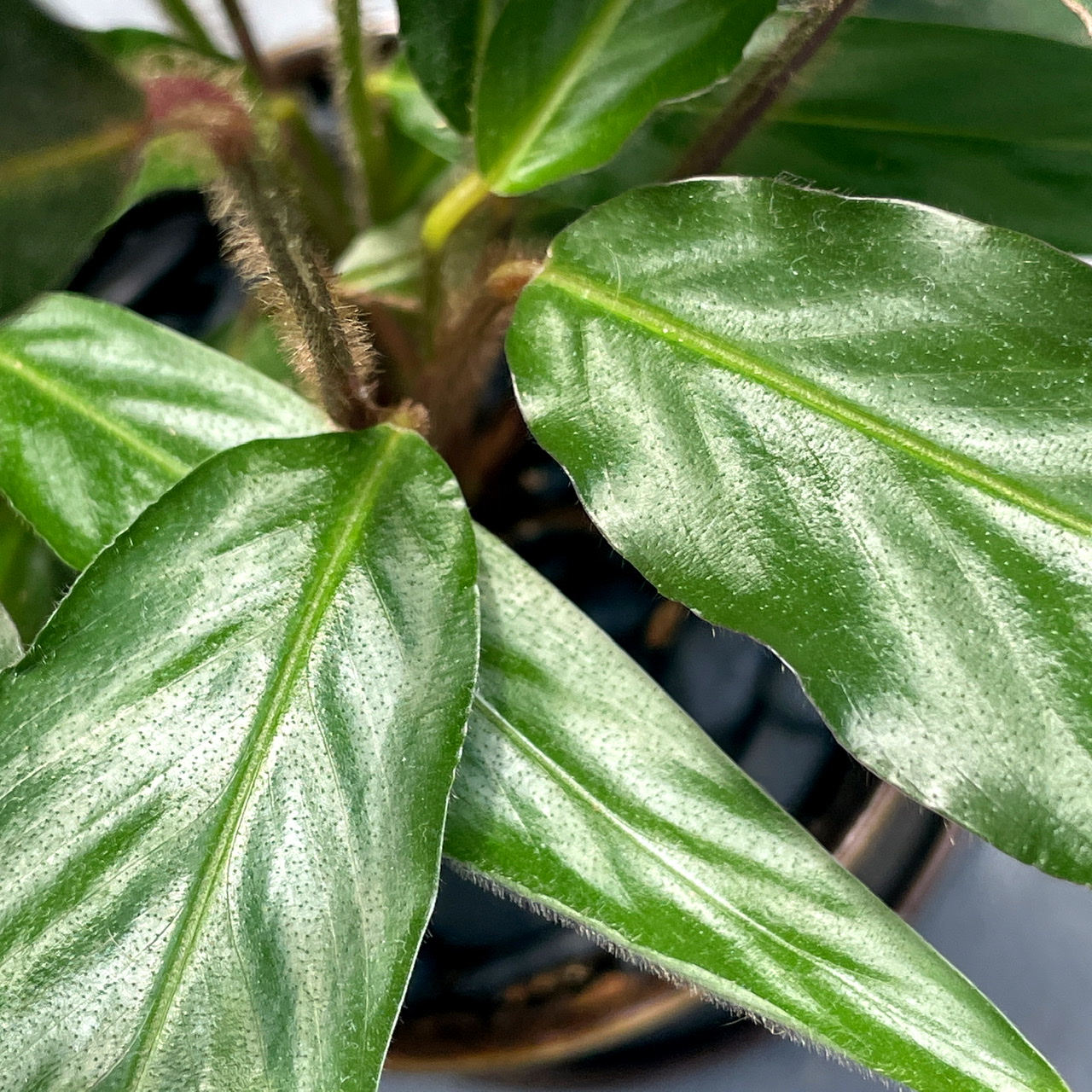
If you’ve shopped for plants at all in the last year or so, you’ve probably ran across many varieties of Calathea, though you might not have realized it. With many different varieties all featuring striking colors, patterns, and texture, these are show-stopper plants that can add a lot of interest to your indoor greenery. A quick Google of ‘Calathea care’ will also reveal some red flags that these plants are a little high maintenance—humidity levels, water chlorination, keep moist but not too moist—all considerations that make these plants a little more of a commitment if you want to keep them looking healthy.
Despite my ever-growing collection of houseplants, and having a pretty solid knowledge base and green thumb, I admit I see no value in suffering through the whims of finnicky plants. I often gravitate towards easy care varieties. As I wrote previously, I even have four varieties of snake plant (one of the easiest to care for!). But, when I was searching for a new plant for my office nook, I fell in love with a little Calathea rubifara, aka velvet Calathea, and decided she was completely worth the extra effort.
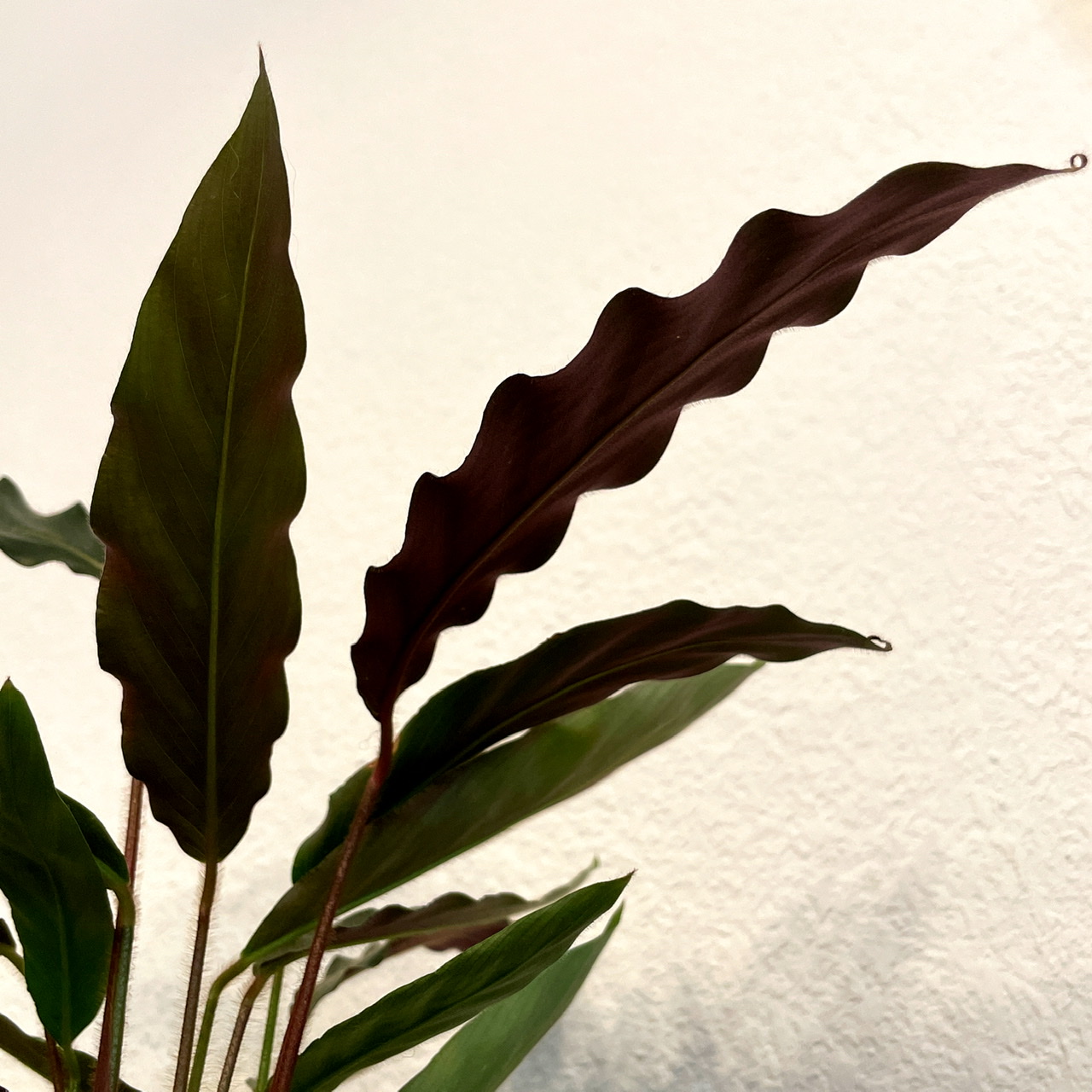
Velvet Calathea are best viewed in person, not online, so keep your eye out next time you’re at a plant shop. As their name suggests, the first striking feature is their velvety leaves that are covered in a soft, fine fuzz. The texture feels wonderfully delicate, and also gives them a unique rich, matte appearance. You also need to move around these plants to check out the beautiful burgundy hue underneath their leaves. This was a big reason I chose velvet Calathea to go on top my desk shelf—from my vantage point, I get to look up at the pretty red undersides!
Despite their reputation as picky plants, my velvet Calathea thrived with pretty minimal upkeep and easy conditions. Having read up a bit and noted that they LOVE humidity, I ended up buying my second Calathea when looking for a plant for my daughter’s bathroom. She takes the hottest, longest showers I’ve ever seen a child take—seriously, the bathroom gets disgustingly humid—so I needed a plant that would thrive in a ‘tropical’ environment. The bathroom also only has a northeast-facing skylight, so the lighting is a little tricky.
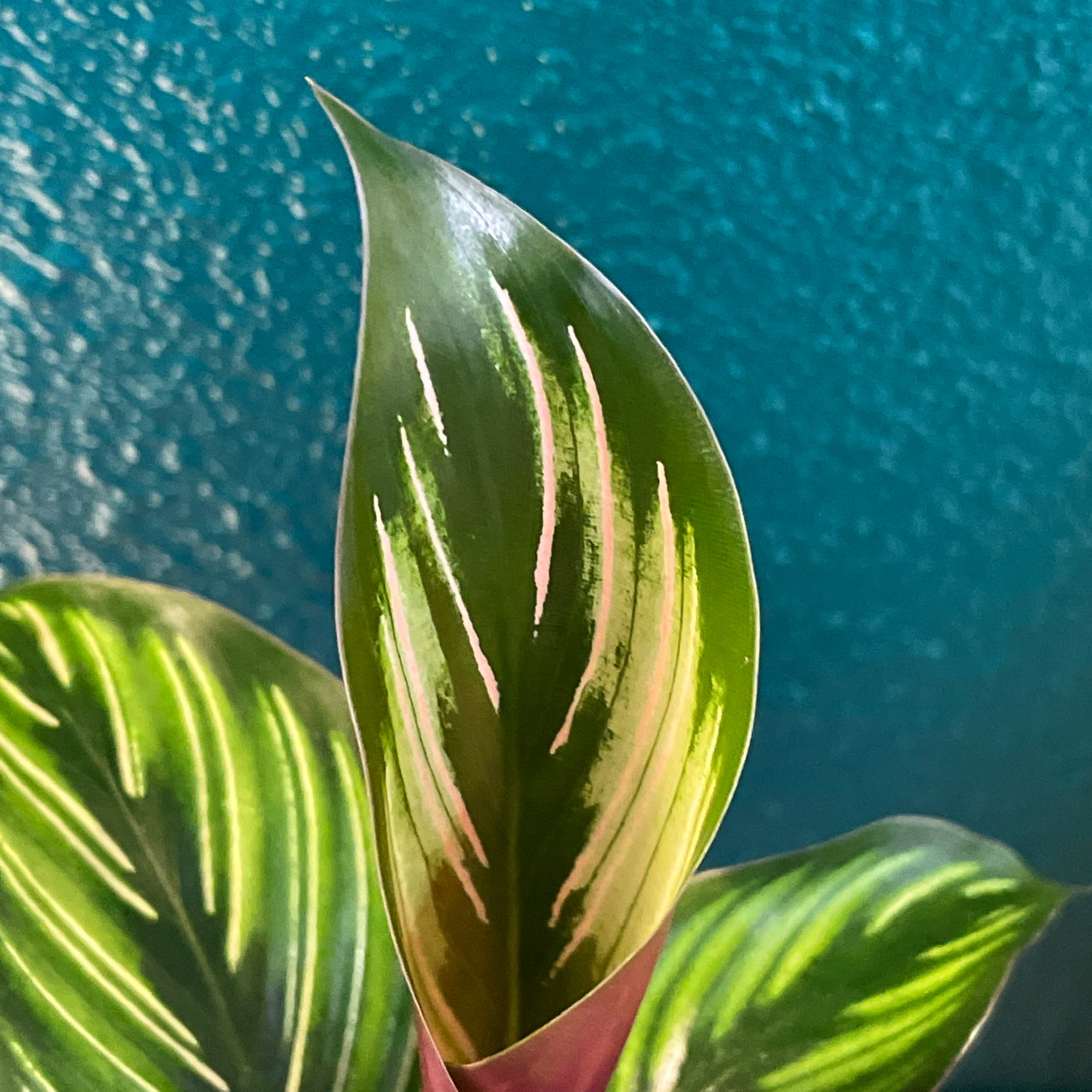
I found a tiny, adorable little Calathea beauty star that clearly needed some TLC to properly showcase its stunning leaves. The beauty stars are a variety of Calathea ornata (often labeled interchangeably or called ‘pinstripe plants’) and they have show-stopping “painted” stripes of green, white, and pale pink.
It took some fine-tuning to overcome some brown tips on both of these plants, but once I found out their likes/dislikes, it’s been easy to get into a routine. Both are growing like crazy, which has been the most satisfying part of their care, because their leaves unfurl in such a beautiful way.
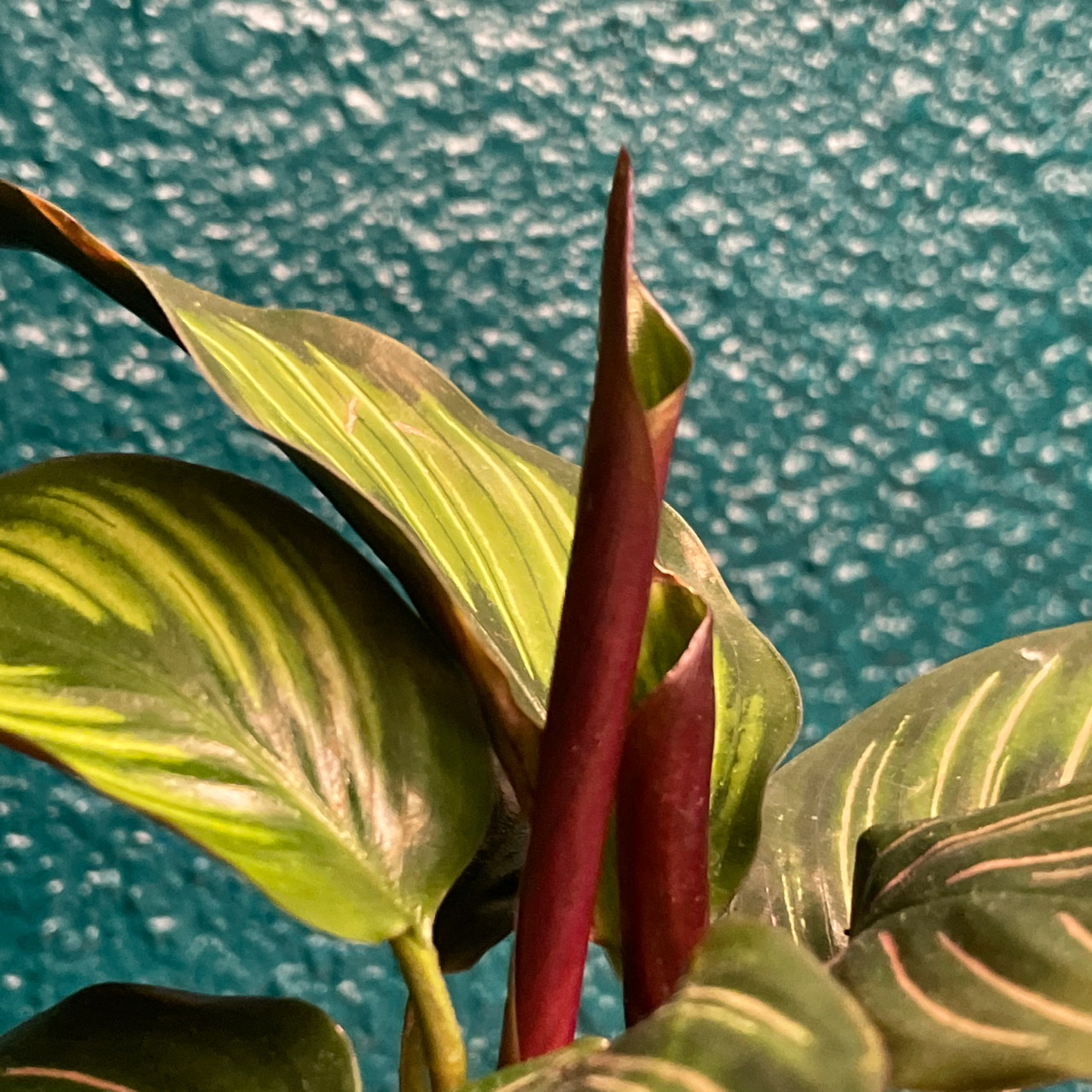
I’ve found the following guidelines have helped to keep the leaves healthy and the plants thriving:
Light
Calathea can survive in moderate to bright, indirect light. Both of mine are definitely on the lower end of moderate. My office plant gets a few hours of indirect morning sun from an east-facing window. The one in the bathroom catches some very indirect late-morning sun from a northeastern skylight. While they will grow faster in bright, indirect light, moderate really does suffice.
Water
This is the tricky part. The whole draw of Calathea is their beautiful, delicate foliage. To keep it healthy, and to avoid dried-up brown tips, you need to pamper them with either rainwater or distilled water. The minerals and fluoride in tap water will quickly ruin their leaves. Since I live in Sacramento, where it can easily go months without rain (and really, because who the hell has time to gather rainwater??) I keep a jug of distilled water on hand, just for these guys. I know, you might be thinking this seems totally unnecessary, but trust me– I noticed an almost immediate difference after I switched away from the tap water I used the first few weeks I had them. Within a month I was able to clip off all the old leaves with brown edges, because of all the new healthy growth.
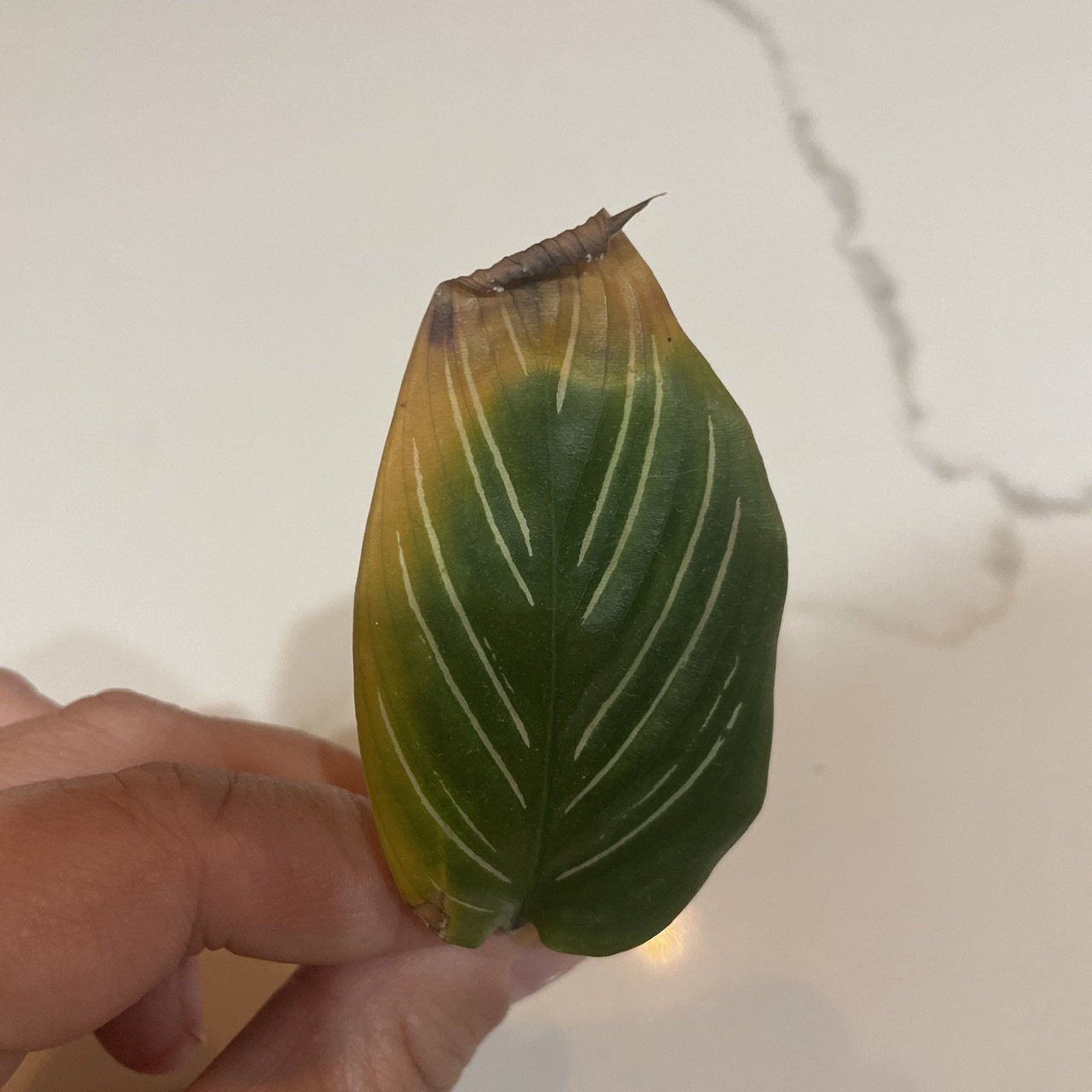
Aside from using distilled water, the dampness level is really important here. I am a firm believer in deeper, less-frequent waterings for most of my plants. Not for Calathea! They really prefer to be kept from totally drying out, and I water mine on a 5-7 day schedule rather than the 10-21 day schedule that suffices for many of my plants. Again, if you don’t keep them happy, the leaves will tell you! Humidity also really helps here. I bring my office plant into the bathroom occasionally in the dry dead of winter just for a little refresh.
Soil & Container
Calathea like a peaty, slightly acidic soil that drains well. African Violet soil works fine, or just a quality indoor potting soil with a little peat worked in. Given how much water then need, drainage holes are a must! This sounds counterintuitive, but plants who like to stay moist need the best drainage otherwise they will quickly get waterlogged. I prefer either a plastic pot or a glazed ceramic pot, as opposed to a terracotta, as terracotta will cause them to dry out much quicker.
If you’ve been eyeing any of the many varieties of Calathea, I’m hoping this has you more excited to give them a try! They are some of my most rewarding plants to care for, and are especially great for bringing in unique color and texture. Once I got over grumbling about needing to buy them their own special water, they’ve been surprisingly easy and well worth the unique texture & color they add to my home.
